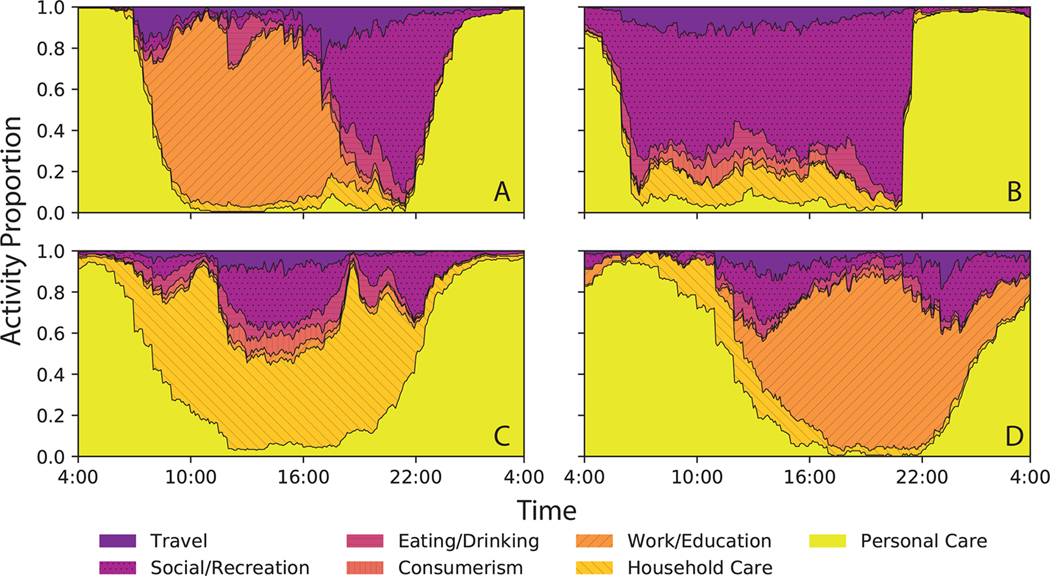Figure 3.
Four example daily activity classifications identified from the American Time Use Survey. The vertical axis represents the relative proportion of each activity type, where each subplot is representative of a cohort of respondents from the ATUS who have similar patterns of activity as identified by our classification model. Class A represents the day of a typical working-class adult. It begins with sleeping, transitions into work, then recreation, and ends with sleep. Class B represents a day that primarily consists of recreation, whereas Class C represents a day that primarily consists of household care, which can include child care. Class D is similar to Class A, but consists of swing or night shift workers; this demonstrates that the classifier can differentiate both conceptual and temporal groupings of activities.

